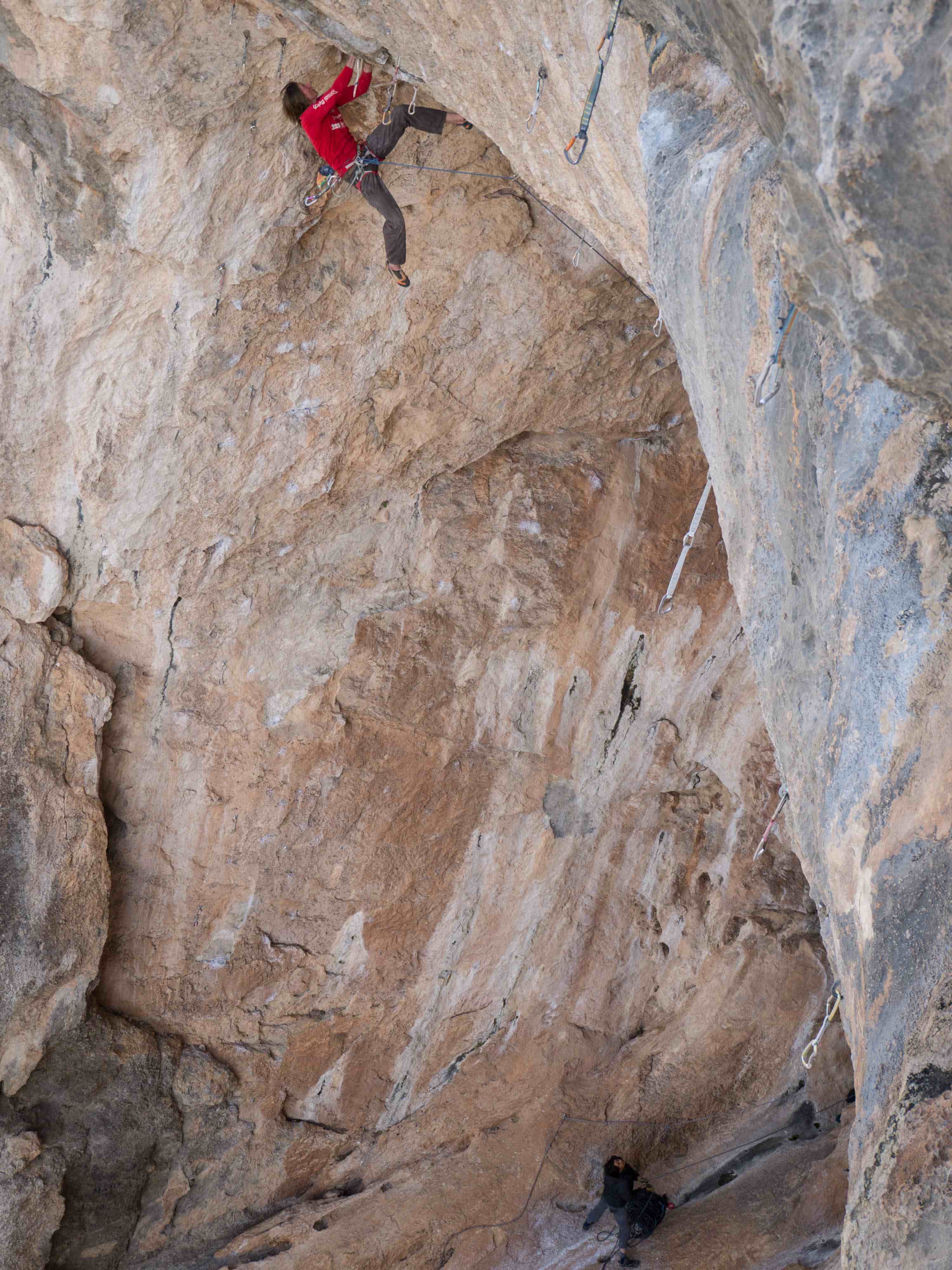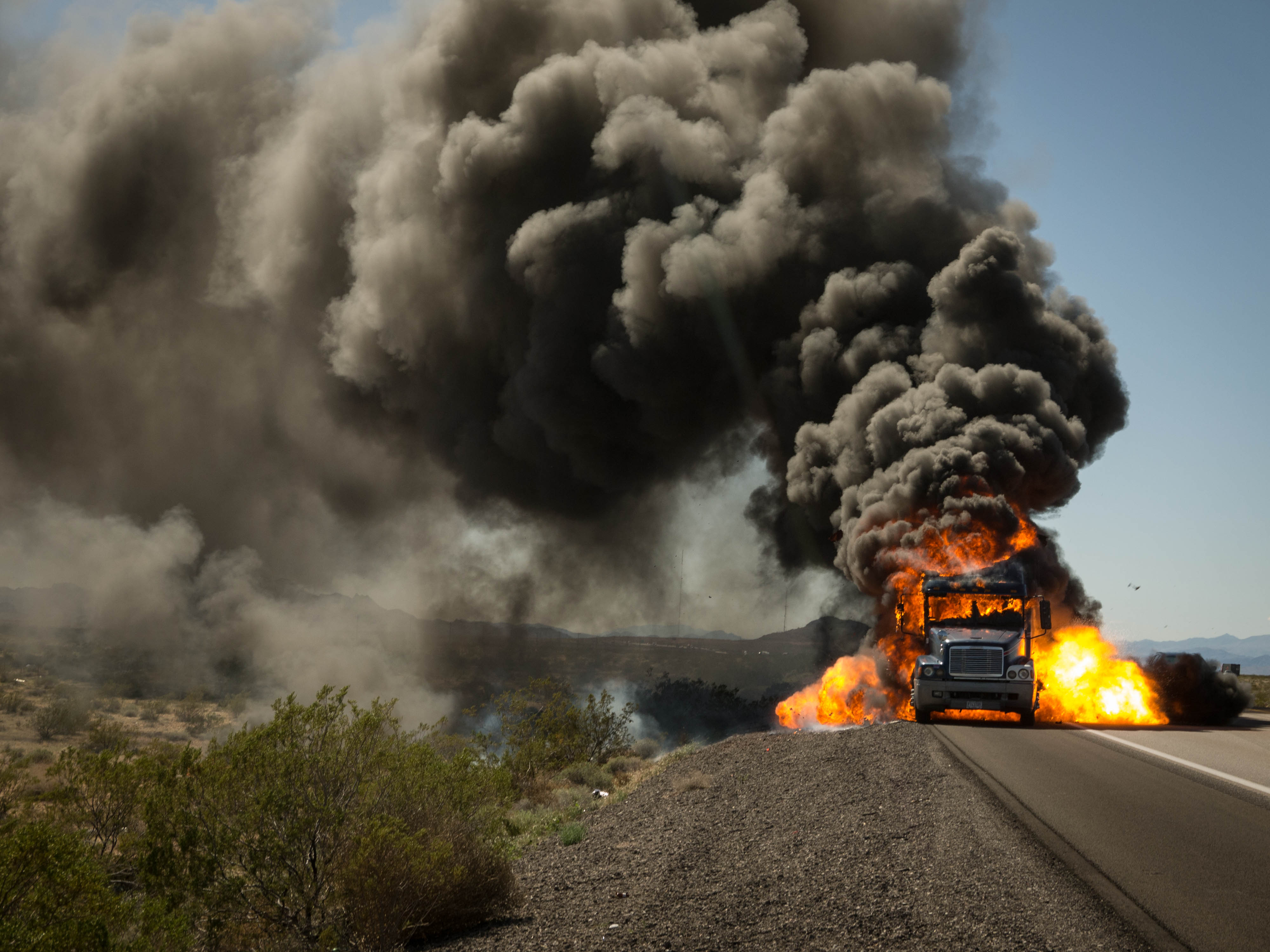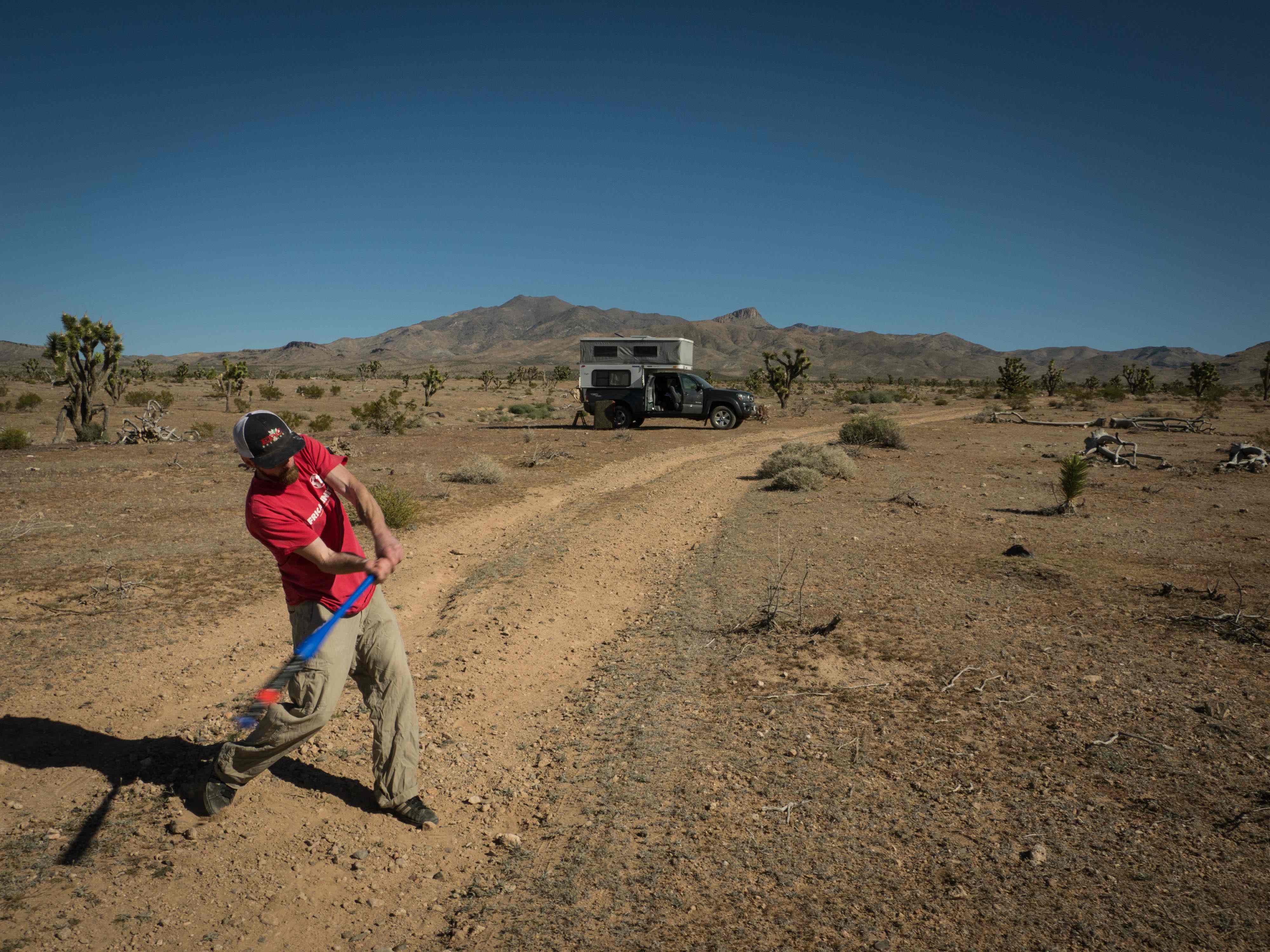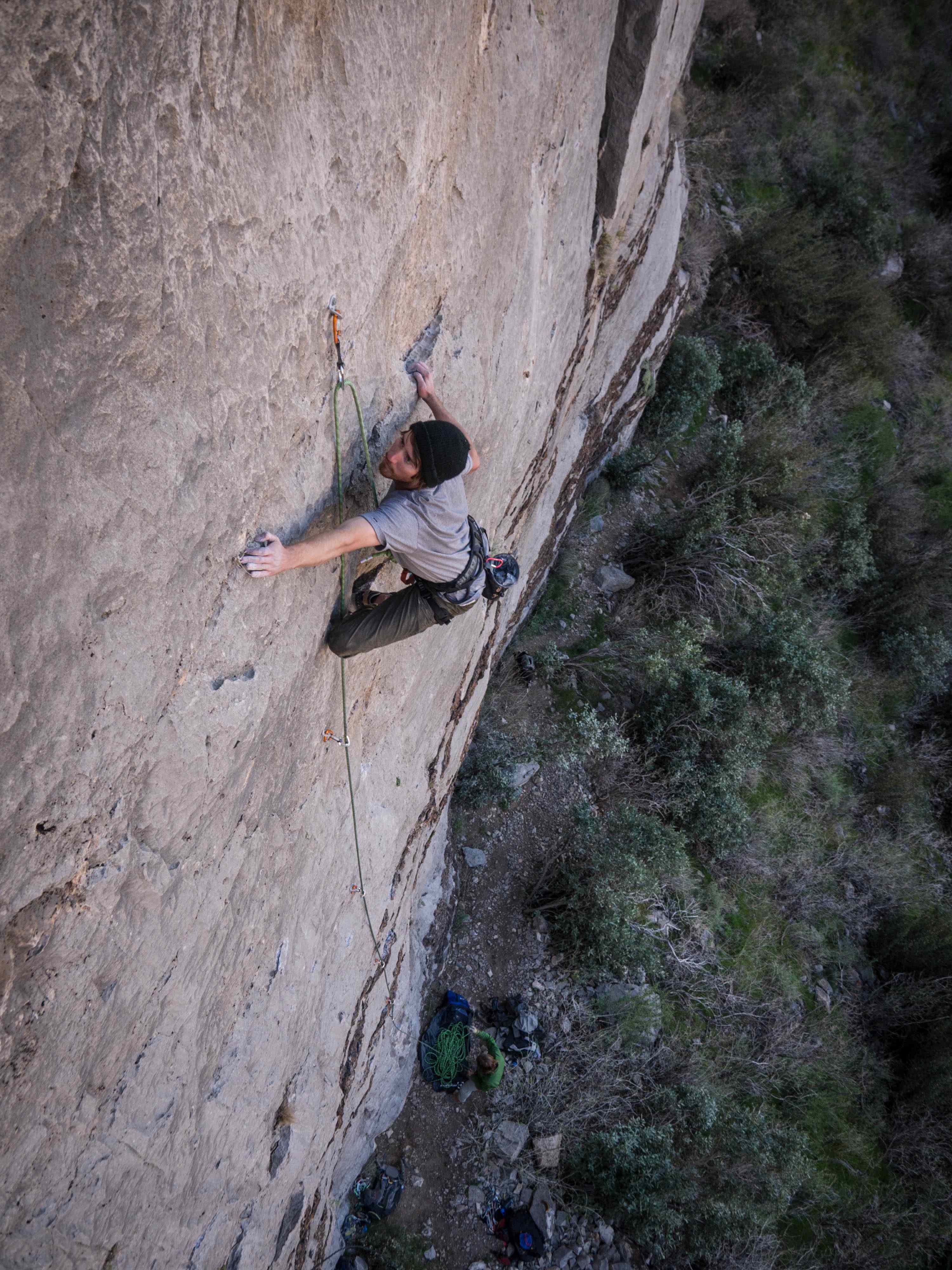While many find the Climber’s Book of Etiquette to be thin and flimsy, the actual nuances of proper climber behavior are plentiful and important. A faux pas at the crag can mean the difference between getting helpful beta from locals or having them throw rocks at your head. The majority of climbing etiquette comes down to basic courtesy, safety and genial human behavior. For those that need a few extra hints, below are a few extra tips.

Fun times at Cathedral outside of Las vegas
Minimize Your Impact
Picking up Clif Bar wrappers, climbing tape, and keeping chalk in your chalk bag remain the basic essentials of crag etiquette. Tiny bits of tape easily escape people’s fingers and back packs. As do old tape gloves. When leaving the crag, sweep through and pick up the little bits of debris, the ends of the rope, the banana peels, and other trash. Showing up and leaving trash everywhere is what people do at their parent’s house. It’s unacceptable at the crag. Carefully dispose of human waste. Never use the bathroom underneath a route or boulder problem. That just stinks. When arriving at a climbing area, keep from throwing your crash pads, back packs, and ropes in the vegetation. Stay on trails when hiking to and from the climbing zone. Protecting the climbing area will ensure that people welcome you back.
Turn Down The Volume
Many climbers head to the crags to escape the loud grind of their daily lives. Noise remains one of the most over looked forms of crag pollution. From bumping the latest Miley Cyrus twerking hit to screaming beta, loud climbers affect the people around them. If you want music at the crag, wear headphones. Providing tips on how to do a move on a route can be helpful but screaming them across the wall annoys everyone around you. Know when your beat spray is unsolicited. Not every climber wants to hear the nuances of the route you’ve been projecting for five years. Unless you’re sport climbing at the Virgin River Gorge, where the sound of sound of a four lane highway and jackhammers will drown your screams of “Mono, mono, gaston!,” keep the volume to a minimum. Throwing wobblers, emotional temper tantrums, is never acceptable. It’s just rock climbing. Keep the crag peaceful by turning down your volume.

This is a climber’s truck that exploded due to excessively loud beta spray. Keep the volume down
Know the Area
Every crag has a specific style and etiquette. At some crags, the locals will scald you for breathing through your mouth in a cave. “It increases humidity!” They’ll scream. Other areas, locals will wonder why you forgot to bring the circus of pads, videographers, and production assistants. Know the history of the area and who the locals are. Treating the locals with respect helps avoid problems. Also, be especially considerate when making a first ascent. Gluing, cleaning rock, and bolting are all hugely important to the local community. The majority of climbing guides contain a section on local ethics in the introduction. Read these tiny nuggets and they’ll help you stay out of trouble. Being informed about the area you’re climbing at will help minimize social blunders.

Ron learns a little about batting practice after a lengthy discussion of local ethics.
Consider Other Climbers
Think about other people climbing on the same routes as you. If you’re out bouldering, put chalk on your hands before you touch the holds. This keeps the rock from getting greasy after you finished your salami sandwich. Brush the holds after you climb and erase tick marks. Most people like the adventure of deciphering a climb. Tick marks can be confusing and an eyesore. If someone is climbing below you on a trad route, be careful not to drop anything or kick loose works. Keep from rappelling onto their heads. Be as organized as possible when meeting other parties on routes, this will facilitate the process of moving around each other. Pick routes or problems that you will be able to climb quickly and efficiently to avoid congestion on popular routes. Leaving a top rope on a climb all day can be serious poor form. If you have a rope on a route, be actively climbing on it. Also, be willing to share anchors with other parties on nearby routes. Separate your gear as much as possible to avoid problems. Being considerate of other climbers will allow them and you to enjoy the climbing more.

Tyson heads to The Grail to avoid crowds and have a mellow experience.
Be Patient
The most popular routes often have a ton of people climbing on them. If there are other people in line to climb a route, think about trying something different. This goes for climbing long traditional routes as well. Be considerate of the queue. Climb the most popular routes on weekdays to avoid crowds. Climb something different if there are people already on the route. Avoid congestion at the warm-ups by starting your climbing day early. If you decide to climb a route with another party on it, be patient. The climbers ahead of you have the right of way. Keep from chatting too much with the belayer as this often causes them to lose focus and could lead to an accident. Enjoy the outdoors and be patient while you’re out climbing.

Hayden relaxes on a weekend, going for a bit of a later start to the crag to avoid the crowds.
Control Your Junk Show
Having three crash pads, two stick brushes, and eight chalk buckets directly below the start of a boulder problem aggravates everyone who wants to climb. Keep your climbing gear orderly and in a central location. Keep control of your junk show. If you bring an animal to the crag, make sure your pet is leashed and on good behavior before you take them out. Dogfights at the crag stink for everyone involved. There can be vet bills and general chaos from the fights. If you’re dog is nosing around in other climber’s gear, tie it up. I’ve seen dogs eat climber lunches. This makes for a horrible situation, as there’s nothing worse than a starving sport climber. They get really angry. Just like with human waste, clean up dog poop at the crag and pack it out. If you’re bringing children to the crag, make sure they are quiet and obedient. Crags are dangerous places with rocks and gear falling constantly. Be careful with your children. Keep a handle on your equipment, your pets, and your children to avoid trouble and irritating other climbers.

